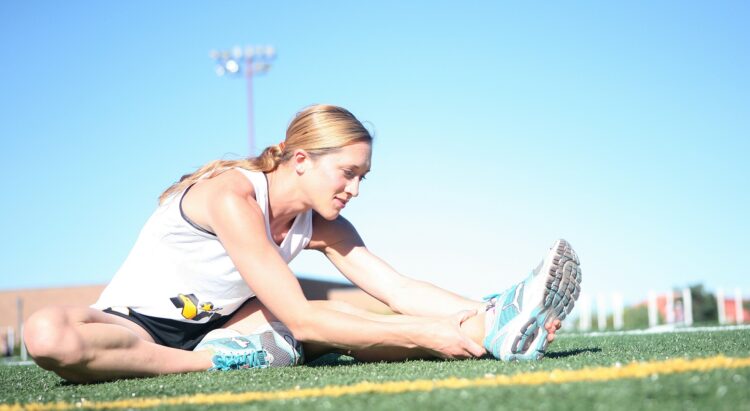
19 Jul 5 Effective Exercises To Help Relieve Plantar Fasciitis
Are you experiencing a stabbing pain on your heel every time you put weight on your foot, and most often when taking your first steps in the morning?
If this is so, you are most likely experiencing plantar fasciitis. But truth is that you are not alone; it is estimated that some two million people receive plantar fasciitis treatment every year in the US.
As explained in our previous post Plantar Fasciitis Explained, this condition causes heel pain and affects thousands of people. This pain will be mostly experienced when you put weight on your foot, and particularly when taking your first steps in the morning.
Unfortunately, plantar fasciitis (also fasciopathy) is also degenerative and is characterized by Collagen Breakdown, nerve and vascular ingrowth. In late stages the condition can progress to calcification.
Depending on the severity and the approach of the treatment, it can take from weeks to several months for this condition to heal.
When plantar fasciitis is not properly treated, it can be painful and lengthy. This is why we are giving you 5 effective ways to help with plantar fasciitis through a series of easy-to-do-at-home exercises.
When treating plantar fasciitis, there are two phases involved:
Pain Dominant Phase
Plantar Fascia becomes sensitive to loads. Pain and stiffness occur mostly when stepping out of bed and taking the first steps of the day, and also with activities like walking long distance or prolonged standing. This phase can last 2-8 weeks.
Interventions include:
- Control pain by reducing or modifying aggravating activities: load management, reduce running distance or frequency
- Improve the flexibility of your ankle and the plantar fascia: mobility work for ankle and foot with emphasis on reducing tightness in calf and posterior chain.
- Increase Plantar Flexor capacity: mainly Isometric strengthening progressing to light Isotonic strengthening as tolerated
- Increase Great Toe mobility and Range of movement: big emphasis on Improving Great toe extension to help with shock absorption and power generation in the stride
- Increase strength and flexibility of the Lower Extremity as a whole: quadriceps and Gluteal muscles assist with load absorption during the run so by strengthening these muscles group we help unloading the fascia.
The Pain Dominant Phase must also address any excessive foot deviation by using over-the-counter orthotics or Taping for short-term pain management.
Load Dominant Stage
After this phase, pain at first step in the morning improves and walking tolerance will increase too. Symptoms remain stable unless the fascia is overloaded.
Interventions include:
- Increase Plantar Flexor capacity: progressing from Isotonic to Eccentric movements of the calf
- Interval training to increase load capacity to develop calf endurance and Power: plyometrics.
- Establish a Return to Run Strategy: identify distance or pace that patient can run without pain and build up from there a distance or pace progression to minimize irritation of the fascia and allow proper loading on these tissues
- Gait and run retraining: Increase step rate to minimize longer ground contact times, large vertical oscillations. Minimize rear foot eversion.
The following 5 exercises are intended to address both the pain dominant phase and load phase
1. Plantar Fascia Mobilization – Stretch (Pain dominant phase)
2. Ankle Strengthening (Pain dominant phase)
3. Isometric Toe Flexion (Pain dominant phase)
4. Great Toe sliders (Load dominant phase)
5. Great Toes – Plantar Fascia Strengthening – Push off (Load dominant phase)
These exercises will help you:
- Improve the flexibility of your ankle and the plantar fascia
- Increase Plantar Flexor capacity
- Increase Great Toe mobility and Range of movement
- Increase strength and flexibility of the Lower Extremity as a whole
- Create Dorsiflexion and Great toe extension
- Create mobility and strengthening of the plantar fascia and calf-ankle-foot-toe complex muscles):
Additionally
Most physical therapists and doctors will agree that using night splints to stretch your calf and the arch of your foot while you sleep can be beneficial. This facilitates stretching by holding the plantar fascia and Achilles tendon in a lengthened position overnight.
Also, orthotics can help distribute pressure more evenly to your feet. Your doctor might prescribe off-the-shelf or custom-fitted arch supports (orthotics) to help distribute pressure to your feet more evenly.
The Tread Labs Stride Insoles are semi-custom orthotics specially created for plantar fasciitis pain relief . Its 4 arch heights deliver a flawless fit & comfort from flat feet to extra high arches. Improve alignment, walk better, feel better.


Don’t forget
To reduce the pain of plantar fasciitis, try these self-care tips:
- Maintaining a healthy weight will minimize stress on your plantar fascia.
- Wear cushioned shoes. Buy shoes with good arch support and highly cushioned. Don’t go barefoot.
- Don’t wear worn-out athletic shoes. Don’t wait until your athletic shoes are worn out to replaced them. Buy new shoes at about 300 to 400 miles of use.
- Try low impact sports. Try a low-impact sport, such as swimming or bicycling, instead of walking or jogging.
Conclusion
- Plantar Fasciopathy and heel pain affect a large population of runners
- Conventional physical or chiropractic treatment usually fails to address all the possible causes of this condition
- Improve and restore plantar fascia length and Plantar Flexion Capacity with emphasis on Great Toe strength are the main goals of the treatment
- Education and load management are key factors for people with Plantar Fasciopathy
Running Essentials



Do you have any questions? Drop a note, we’d love to hear from you.
Sign Up and ask the Therapist.
Lionel Pannunzio is a Physical Therapist and Board-Certified Sports Specialist, owner of White Bay Physical Therapy.
He has been helping runners for more than 20 years
“Keeping Athletes in the game”
With offices located at 17180 Royal Palm Blvd – Weston – Florida – 33326
You can reach him at 754-244-2561
Visit his website: www.wbsphysicaltherapy.com
[email protected]

Sorry, the comment form is closed at this time.